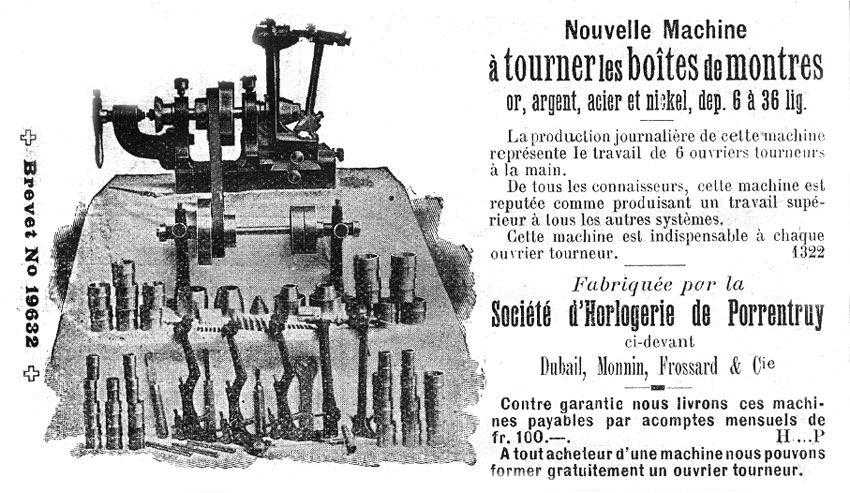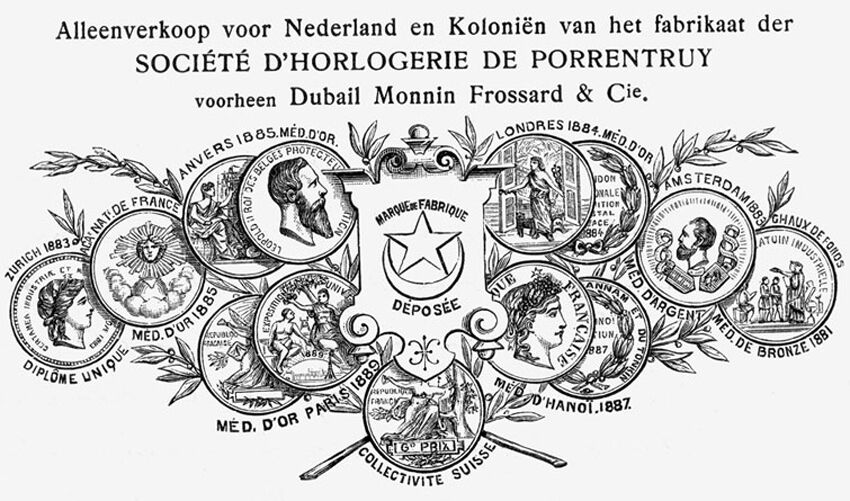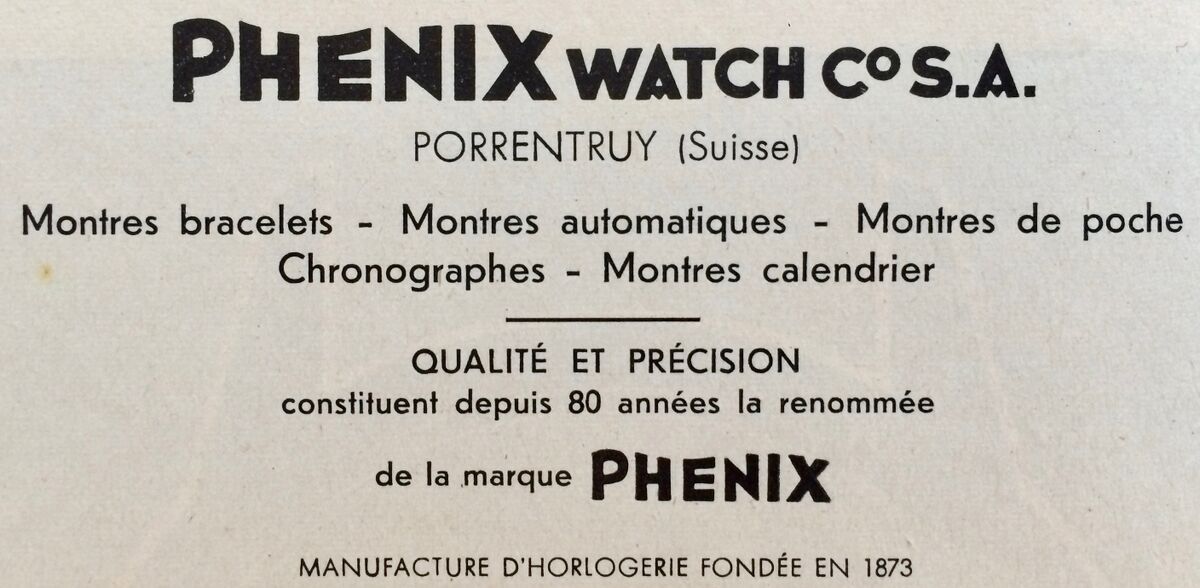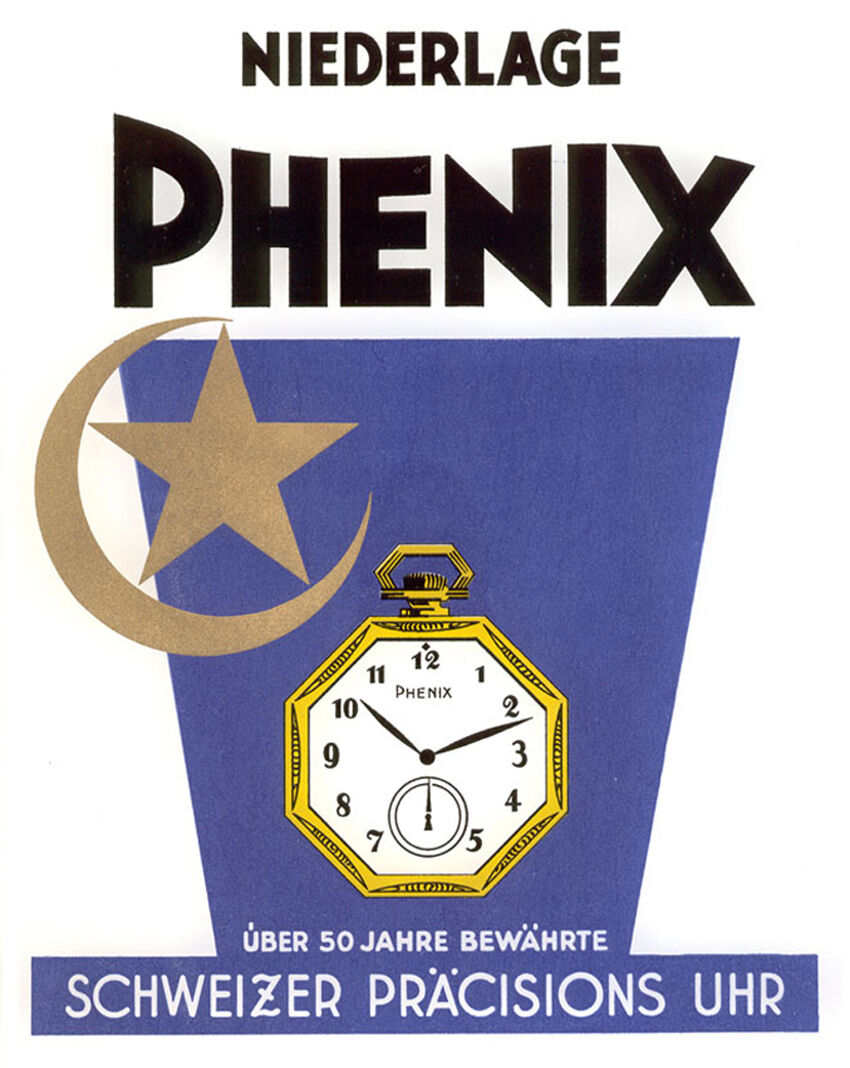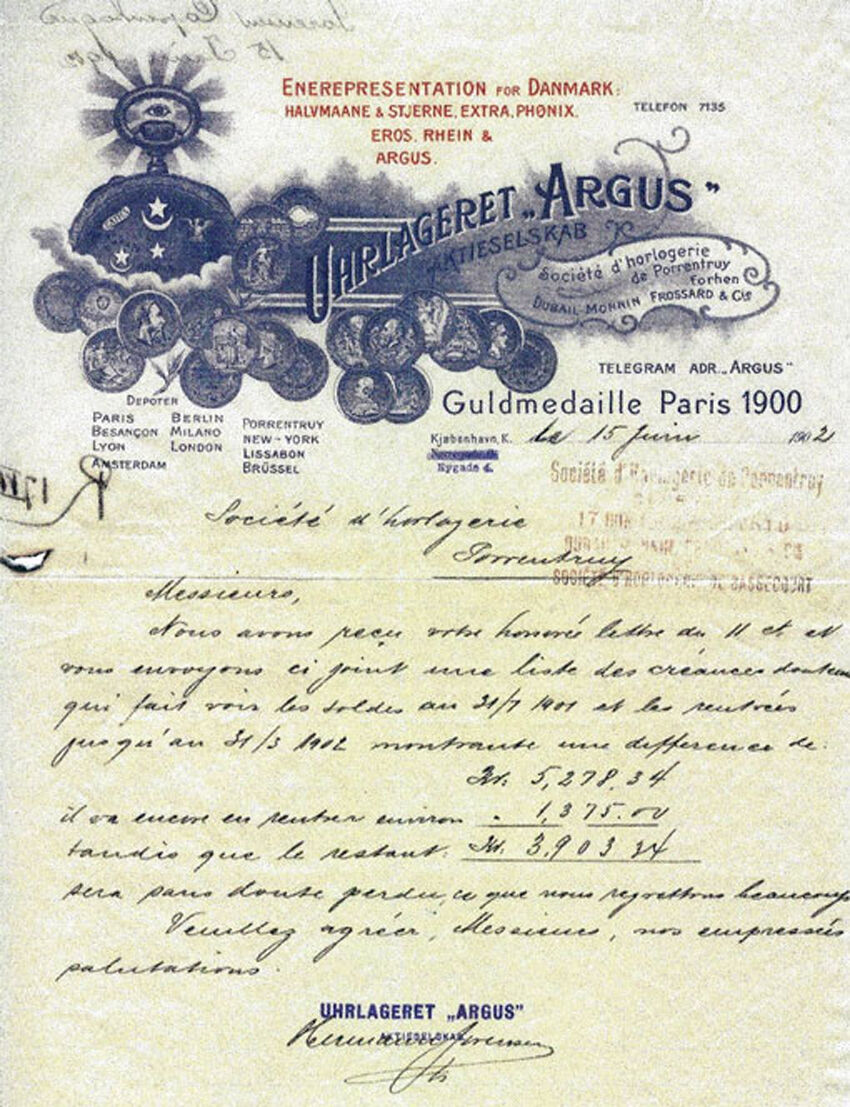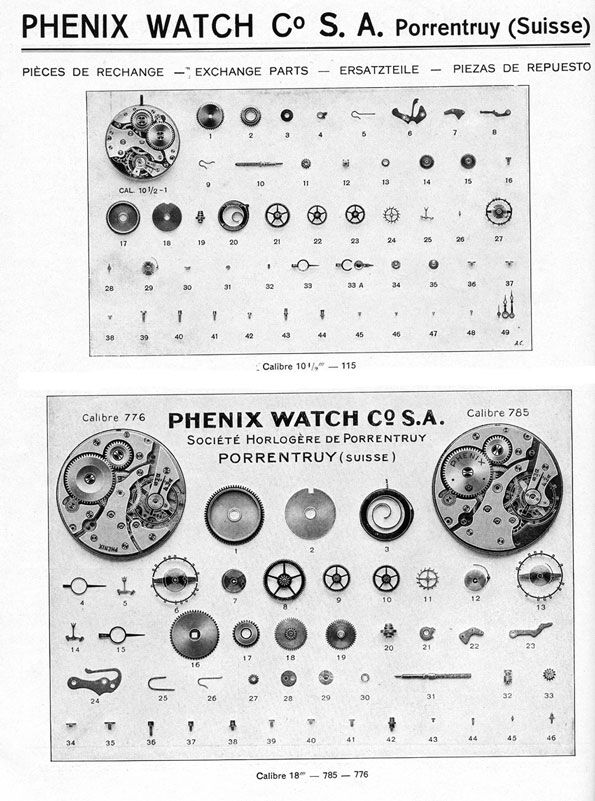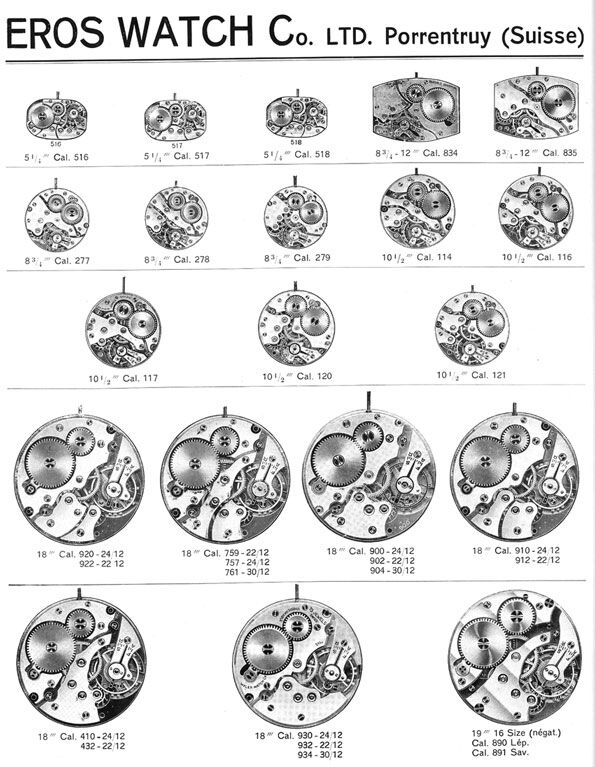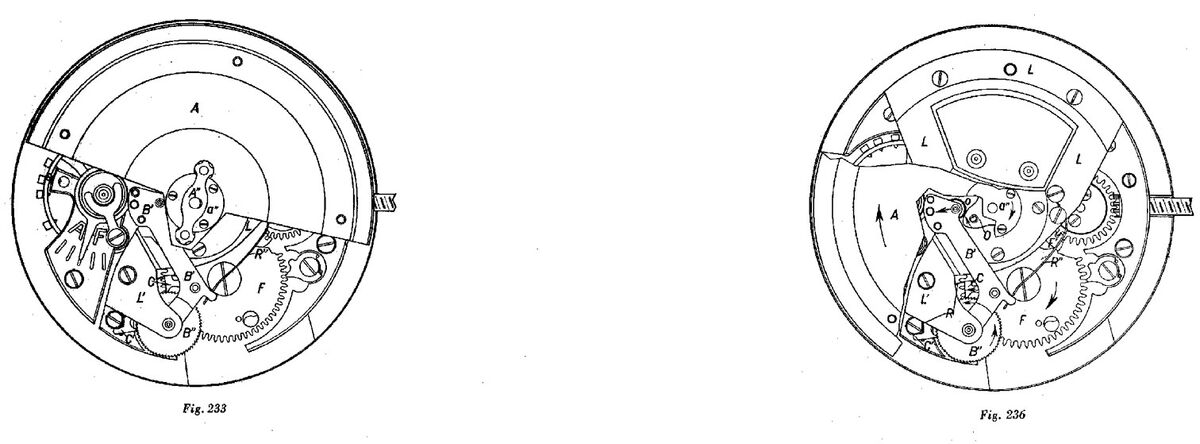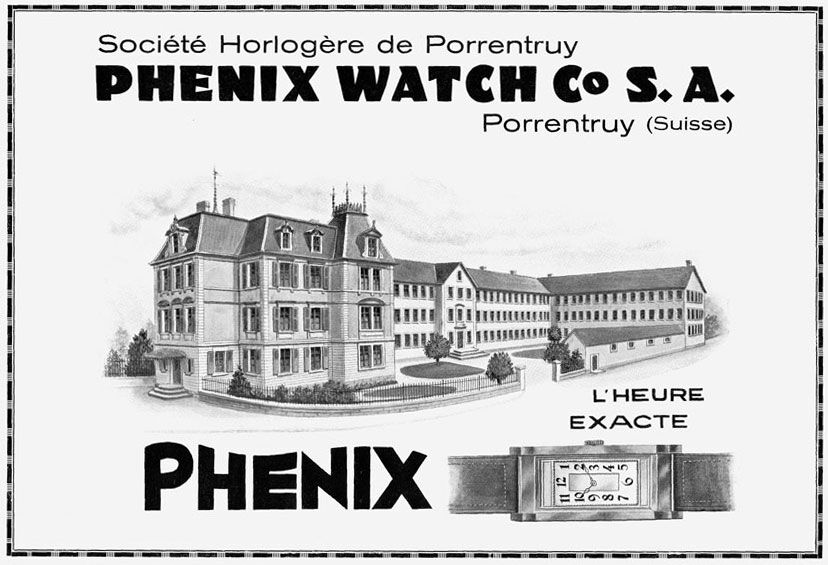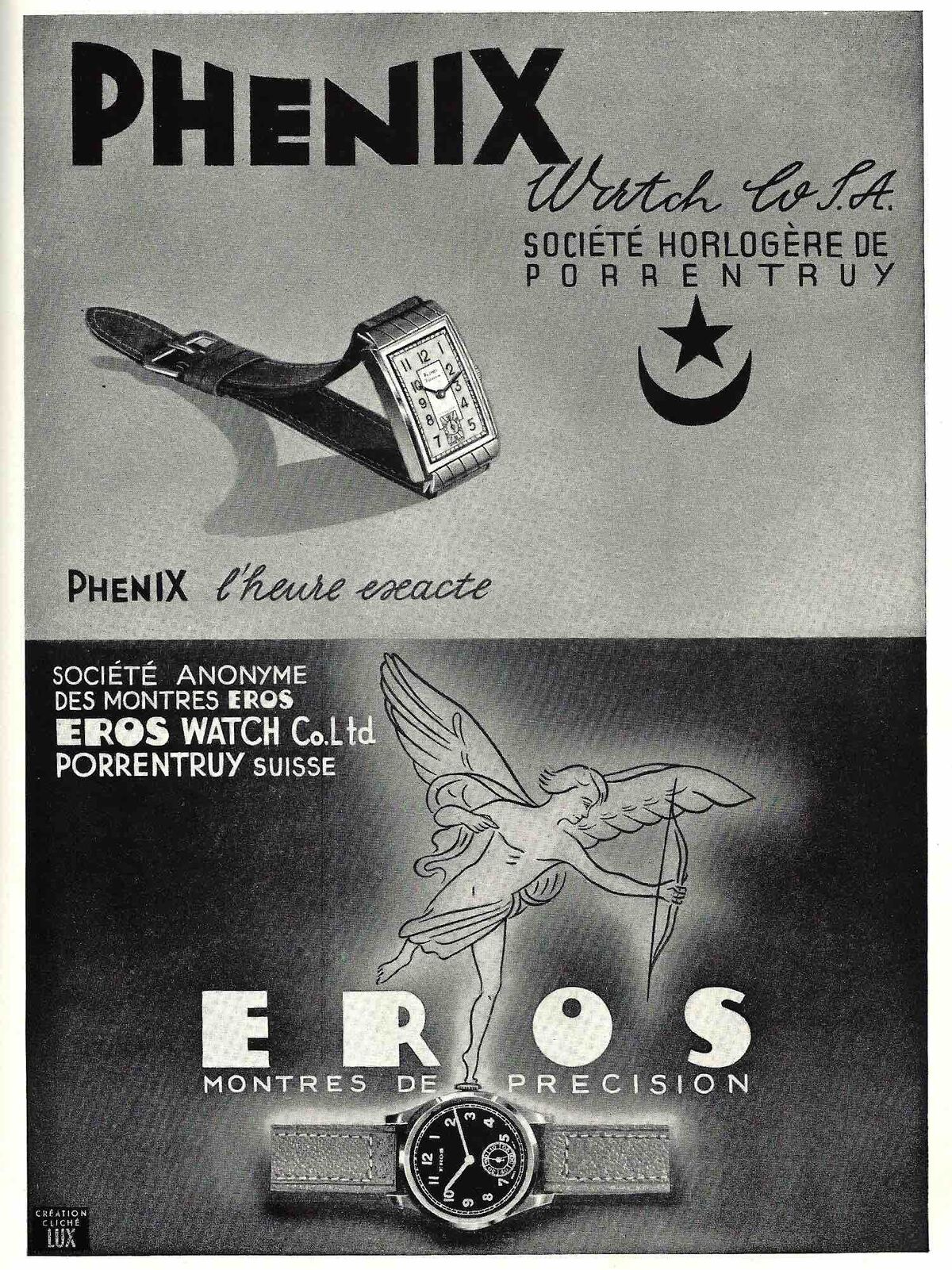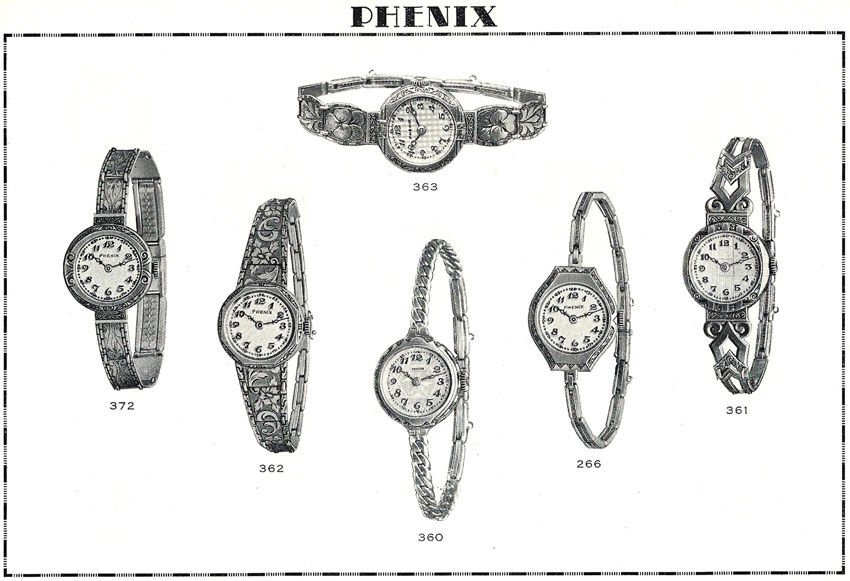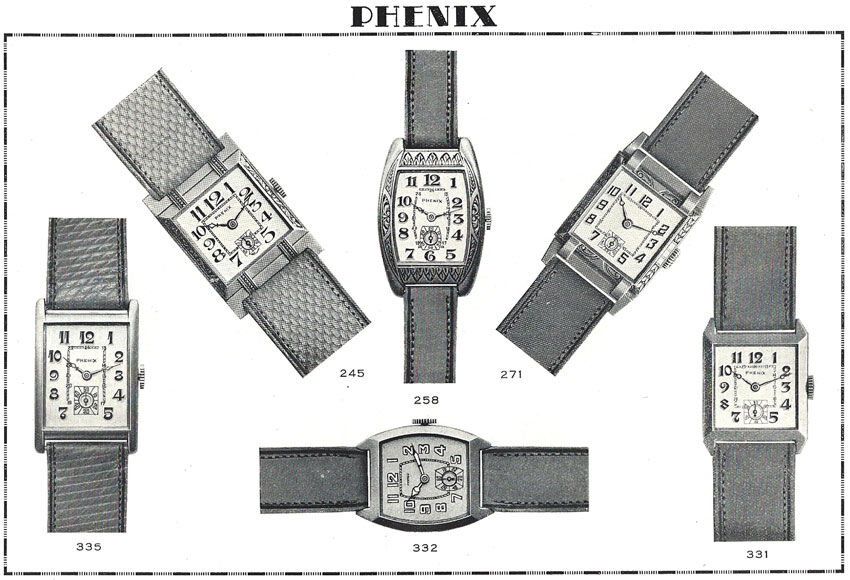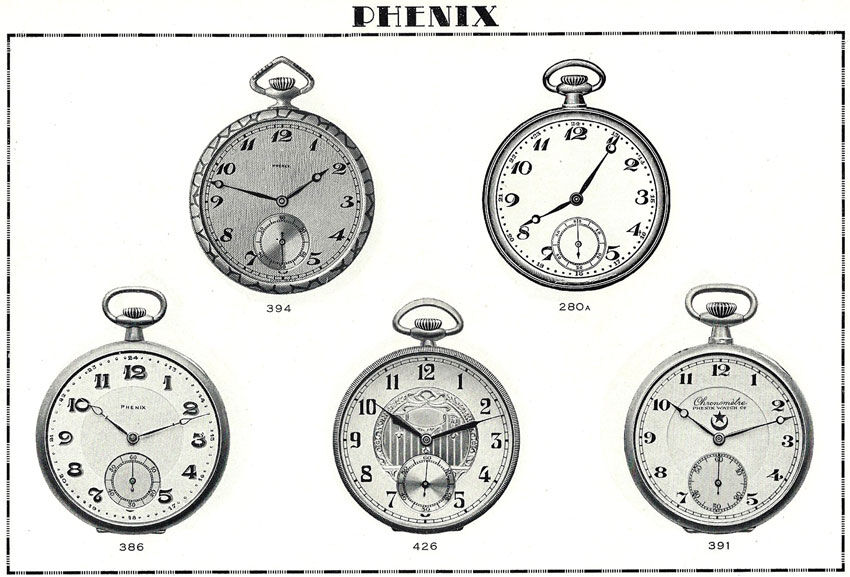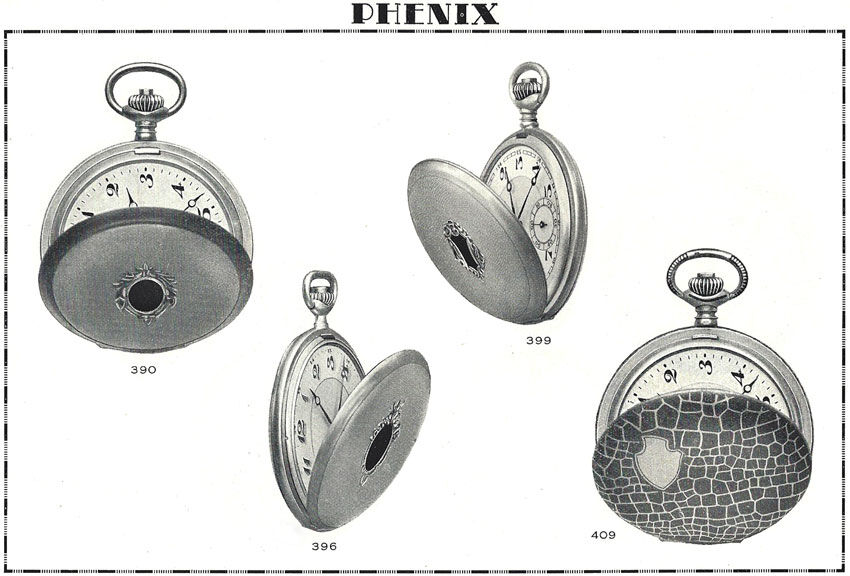
The origin of the Phenix factory starts in 1873, the day when Messrs Jules Dubail (1846-1940), Jean-Baptiste Monnin and Joseph Frossard (1844-1918) from Porrentruy founded a firm named after them: “Dubail, Monnin, Frossard & Cie.”
Mister Jules Dubail, from France, settled in Delle, where he created a turning company, that became, thereafter, one of the most regionally flourishing firm. He was also one of the principal founders of the watchmaking school of Porrentruy.
The Dubail-Monnin-Frossard factory acquired the old Lopin factory in Delle, situated on the Joncherey road. These industrialists were formerly owner of gas extinguishers’ patents. With a precise mechanical movement, these very ingenious tools allowed to turn out the gaslights in the streets, stations, etc.
Messrs Dubail, Frossard and Cie will manufacture the tools in Delle and also will settle a branch of the production of (outside) benzine gas grill named “Duplex.”
The Mai 6 1899, the factory takes the name of “Société d’horlogerie de Porrentruy” (Porrentruy Watchmaking Company) and also acquires buildings in Bassecourt. The company is directed by six associates: Messrs Roussel Galle, Jean-Baptiste Monnin, Louis Dubail, Adolphe Dubail, Joseph Dubail and Joseph Frossard.
The March 21 1890, the company “Dubail, Monnin, Frossard & Cie” is dissolved.
In February 1902, the shareholders of the “Société d’Horlogerie” choose the company’s liquidation. Many liquidators are named for this purpose. This decision has been taken after the revocation of Messrs Monnin and Fattet as administrators and directors. Early July, an advertisement is published in diverse newspapers for the commercial director’s position in Porrentruy and for the manager’s position in Bassecourt. Since the July 28 1902, begins a public sale with the whole corporate assets of the company, including the plants of Porrentruy and Bassecourt, building lands in the Chemin de la Gare in Porrentruy, houses in Bassecourt with around seven hectares of land, industrial furniture, etc. Then, the company reborns under the corporate name of “Phénix Watch Co SA” headed by new associates: M. Edouard Boivin from Basel as director; Gaston Daucourt, notary; Charles Boivin, industrialist; Victor Donzelot, merchant; Constantin Senn, from Delémont as director.
J.-B. Monnin creates his own company.
Indeed, one finds an advertisement from 1908 with the firm Monnin, Rebetez & Cie for the brand “M.R.C Croissant”. Rebetez is a former foreman of the organization Dubail, Monnin, Frossard & Cie. This factory proposed practically the same products as the D.M.F & Cie, namely, lever watches and cylinder of high quality, interchangeable, thin, and exported these watches in many countries.
In 1917, the two associates split and the corporate name becomes “Monnin & Cie”. The brand will be deregistered in 1941.
Phénix, industrial pioneer
The various brands registered by the company:
This firm was the first factory in Switzerland to have a registered caliber for a watch movement.
The company received the highest distinctions and rewards at the major international exhibitions:
La Chaux-de-Fonds in 1881; Amsterdam and Zurich in 1883; London in 1884; Antwerp in 1885, Rome in 1888; Paris in 1889; Geneva in 1896; Paris in 1900; Salonika in 1931.
The Société horlogère de Porrentruy (Watchmaking Company of Porrentruy), Phénix Watch Co S.A., was one of the pioneers in the mechanical production of watches with lever escapement and the firm concepts and builds the first machine to set the stones with “quilles” (pins). Similarly, it develops the famous lathe popularly known as “tour Dubail” (Dubail lathe) in the mechanical industry. This simple machine issues a highly precise work for the machining of particularly delicate pieces.
The “Société horlogère de Porrentruy”, “Dubail, Monnin, Frossard & Cie and Société d'Horlogerie de Bassecourt (Watchmaking Company of Bassecourt)” got in contact with various sellers around the world to sell its products:
In 1899, by J. B. Leibowitz & Co in Braila, Romania. In 1900, by P. Eustache in Besançon, France.
By Andrieux Frères in Bethune, Belgium. Contract with M. Léopold Lowith from Vienna for the Austria and the Hungary. In 1901, Pain Brothers in Hastings, England.
In 1904, the “Société horlogère de Porrentruy” hires Mr. Auguste Marchand from Sonvillier with an annual salary of three thousand francs to sell the products in the English Province and in London, with a residence in London. The same year, he left for H. H. Niggebrugge, dealer in Amsterdam, Netherlands.
In February 1905, the company hires Mr. Joseph Choquard Son and sends him as a salesman in Copenhagen during two years. In October 1907, he is recalled in Switzerland to take the direction of the Bassecourt plant for three years with an annual salary of three thousands francs. The contract will be renewed afterward. The same year, the Société horlogère de Porrentruy hires Mr. Carlos Graziano from La Chaux-de-Fonds for the exportation of its products to Mexico.
Since the beginning of the 20th century, the exploitation specialized principally in the production of lever watches, wristwatches, pocket watches, of all dimensions, from the baguette watch 3 ¾ to the pocket watch 22 lines.
It also produced all its supplies, included the turning, the trimming, the pivoting, the polishing, the gilding, and the exterior, namely the dials and the cases.
For the balance springs, the “Société horlogère de Porrentruy” called the company "Borle et Jequier" from Fleurier and will sign a contract the August 9 1900.
The company manufactured also watches for automobiles as well as counters for rockets.

Buildings’ situation in Porrentruy in 1910.
The buildings on the plant in Porrentruy had a total surface of more than 6,000 square meters.
The place is known as “La Molière” under No. 337, 337a, b, c, d, & f.
No. 337: the building built of stone, with a tile-covered roof, including the ground floor and two floors with workshops and offices.
No. 337 a: a building built of stone, with a slate roof and zinc on the ground floor containing the boiler and the steam engine. Additionally, this room contains the coal, a circular saw and is also used for the filling and cleaning of the lights.
No. 337 b: a building with only a ground floor built in “réglemurs” and in wood, covered with tiles, and containing a carpentry workshop with two benches and used as a shed for the boards and the coal.
No. 337 d: a building used for watchmaking workshops built of stone, with a slate roof, and equipped with two lightning conductors.
No. 337 f: a building built of stone, bricks, iron and wood, with a slate roof, and linked by a covered passage with other factory buildings. This building contained offices, workshops, shops, and the doorman’s accommodation on the ground floor.
Building’s situation in Bassecourt in 1910.
The place is known as “La Combe” under No. 127 and 127 a.
The building is constructed with walls and réglemurs covered by tiles. It constitutes one single building with the new adjacent workshops.
In 1901, the “Société horlogère de Porrentruy” started an advertising campaign in various newspapers around the world. In Austria: in the Leipziger watchmaker newspaper. In Germany: in the daily newspaper of Berlin. In India: in the Times.
The factory is also active in various watchmaker indexes, brochures, specialist magazines.
Insurances
On April 18 1887, the company “Dubail, Monnin et Frossard” contracts an insurance at “La Neuchâteloise” for a maximum of 20,000 francs per day. This contract concerns the freight transport, by train, truck, or post, shipped in Switzerland, Germany, Belgium, Holland, France, Austria, Luxembourg, Hungria, and Italy.
In 1889, the corporate name changes for “Société d’Horlogerie de Porrentruy”, a new insurance policy is done with the same insurance company. For a maximum of 35,000 francs per day, valid in the whole world.
The documents about the fire insurance of the December 31 1909 are more detailed. The company asked four different insurances, namely “L’Helvétia” in St-Gallen, “La Bâloise” in Bern, “La Société Suisse du Mobilier” in Bern and the French insurance of Phénix in Paris to cover all the buildings of Porrentruy and Bassecourt. One has to remember that, at that time, the engines and the heating used steam. The lightning of the workshops is done by oil lamps, whereas the office is lightened by gas. The risk of explosion for the boiler and the fires are significant.
Hereunder, the details for the general inventory and the division of the total insured sum on the Porrentruy’s plant:
General Inventory
a) Raw materials, supplies, etc. 85,000.-
b) Ebauches (movement-blank), escapements 340’000.-
c) “Etablissages” 180,000.-
d) Finished watches 360,000.-
e) Office and industrial furniture, others 270,000.-
Total insured sum: 1’235’000.-
The total insured sum is separated between the various insurance companies as follows:
“Phénix” French company 325,000.- “Bâloise” Swiss company 150,000 “Helvétia” Swiss company 410,000.- “Société Suisse pour l’Assurance du Mobilier” 350,000.-
For the Bassecourt’s plant, the inventory is identical. However, the total sum is 290,000 francs.
The total insured division is split between the French company “Phénix” for 170,000 francs and the “Société Suisse pour l’Assurance du Mobilier” for 120,000 francs.
After the First World War and during the crisis, namely during the years 1918 to 1922 and 1932 to 1936, it organized, in its own workshops, courses to rehabilitate watchmaker workers, who want to reintegrate after a long unemployment period.
Worried to be a good professional training, the Phénix had historically collaborated to the proper functioning of the learning workshops at the professional school. In its own workshops, it formed mechanics, press-tool makers, watchmaker practitioners, and timers.
In the 1930s, the company occupies about one hundred of workers and fabricates one hundred thousand watches per year.
In 1934, the management hires Mister Henri Knecht, who was 24 years old at the time. He was in charge of the technical responsibility and possessed the confidence of the executive board. He contributed largely to the company expansion.
Since 1939, the Phénix was taken over by the cantonal bank of Bern, then given to the ASUAG and finally given back in 1949 to a consortium of Granges near the watchmaking company NIVADA. The new executive board is formed of Messrs Robert Lerch, president; Alois Casutt, vice-president; Paul Aeschbacher, secretary; Jakob Schneider, Emile Schneider, and Charles Schneider.
MSR: a dynamic group
A decisive step will be crossed in 1961 with the creation of the group MSR (Manufactures d'horlogerie suisses réunies S.A.), composed by four factories: Revue Thommen in Waldenbourg, Vulcain in La Chaux-de- Fonds, Phénix Watch S.A. in Porrentruy, and Buser Frères & Cie S.A. in Niederdorf.
At the beginning, this group produced 40 calibers. For competitive reasons, this number was reduced to eight. In particular, the caliber 200 of 1954, automatic with a rotor that rotates on a roller bearing; the “Rollamatic”. The caliber 132 of 1956; the “Chronostop”, without counter nor push-button, because the commanding functions of the seconds hand are initiated by the crown without using a column wheel.
To maximize its potential of efficiency, the group was structured as follows: Vulcain was responsible for the commercial part, Phénix for the assembly, and Revue Thommen for the ebauches (movement-blank), whereas Buser started the building of pressure measuring instrument. Furthermore, with the help of the preexisting bases, the group tried a diversification of activities. This attempt has succeeded as in 1972, on a turnover of 24.2 millions of francs, the watchmaking part was 13.4 millions and the diversified products (mainly mechanic and electronic) was 10.8 millions francs.
The MSR group, which has reinvested all its gains in the modernization and in the extension of its production capacities, has known an encouraging growth.
In June 1973, the group MSR, which had its head office in Biel, related the “Maison Marvin” of La Chaux-de-Fonds. This new concentration opened new markets for MSR, because of the good renown of the brand Marvin and its distribution network.
The seventies and the end of a factory.
On the overall 600 employees of the MSR group, the Phénix employed 162 of them. The payroll of the company was increased in Porrentruy throughout the last months. The Phénix included a watchmaking department. At that time, this factory was the only one of the group to do assembly of movements. The diversification of the group’s activities results for the Phénix in the introduction, since 1967, of an electronic department, that worked full-time on behalf of Ebauches S.A. Around seventy female workers assemble electronic circuits. Phénix Watch S.A. produced daily from 3,000 to 4,000 of this small movements.
It also remains a small department of ebauches (movement-blank) and mechanic, that produced mainly watchmaking supplies and employed around fifteen persons.
In 1981, the factory faced serious difficulties. A restructuring plan is adopted and included also dismissals. After having managed the company during 26 years, the director Roland Voisin from Porrentruy has been discharged. The factory employed then around fifty persons. After the decisions taken by the general management of the group, Revue Thommen located in Waldenburg, the number of employees will be reduced to 11 persons, who will work at 40%. A section of the factory is located in a case workshop, another to the professional school.
At the end of the eighties, the workers with the help of the ETA group, create the company “Prisma” and move to new premises situated Route d’Alle.
The Phénix building will be destroyed in 1984 to be replaced by a shopping center and by apartments. This resort keeps the name of “Phénix”.
Nowadays, a building remains that was the company offices where we can still see the initials “DMF” in forged iron on the main door. It is the last vestige of a major watchmaking company.
